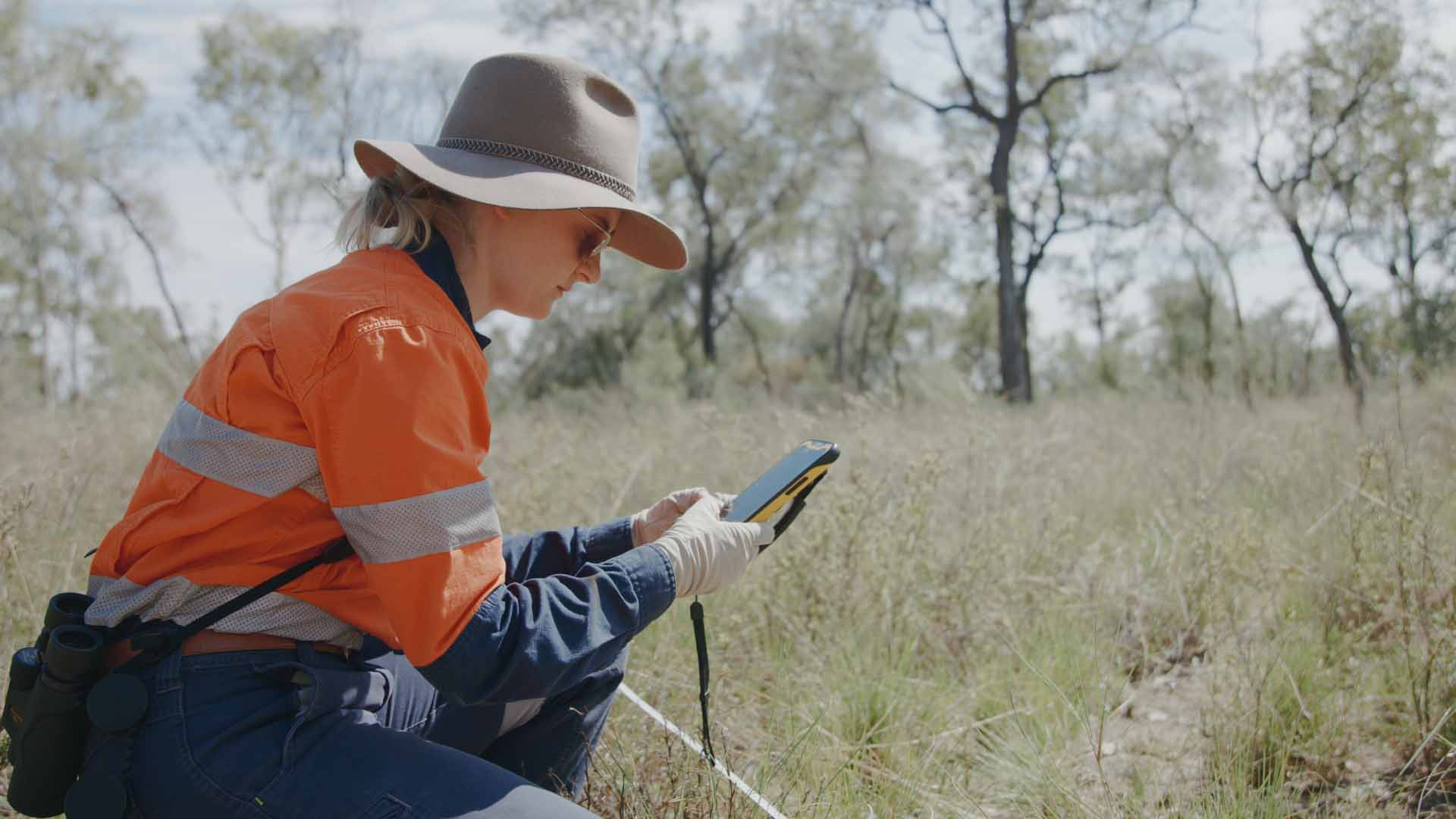Biodiversity offsets are required by developers to compensate for the environmental impact on flora and fauna species and vegetation communities arising from large-scale projects. But how are these offsets measured and what are some of the key challenges that your organisation may face if you are planning to initiate a project in Queensland?
Given our capabilities and knowledge in this field, we are experienced with the complexities associated with navigating biodiversity offsets. In this article, we are sharing not only some of the hurdles faced, but also the strategic approaches for effectively managing them.
The Initial Stages:
Impact Assessment & Measuring Biodiversity Offsets
How do the ecologists at E2M measure the scale of biodiversity offset you will be required to undertake? In Queensland, the state and federal government use biodiversity offset calculators to determine the scale of compensation that is required.
These calculators’ factor in:
- the quality of the impacted habitat
- the quality and ‘risk of loss’ of the proposed offset area
- the improvements that can reasonably be expected from the offset
- the time for an ecological benefit to be achieved by the offset
Prior to a project commencing, our ecologists will conduct an initial impact assessment to get an understanding of how the environment will be affected. Where a significant residual impact is identified to threatened species and / or ecological communities, E2M can assist with identifying potentially suitable locations for offsets.
Surveys to confirm the suitability and baseline condition of a proposed offset area will then be undertaken and from that assessment, we draft an offset area management plan or strategy that clearly outlines what steps will be taken to compensate through environmental management measures. This strategy needs to be approved by the state and federal government before the project can commence.
Preparation & Planning:
The Biggest Challenges of Biodiversity Offsets
While many would assume that the biggest challenge of biodiversity offsets is the implementation and maintenance of the strategy itself, at E2M, we have developed a series of technologies and processes to help us through these crucial steps of the program. Our team’s expertise means we are well equipped to handle the demands of monitoring an offset program once it is underway.
It is the steps leading up to implementation that offer the biggest hurdles, including sourcing suitable land for an offset, the constantly increasing requirements for evidence to support an offset proposal, and the timeframes required to gain approval from both government and landowners.
These are all manageable challenges that E2M take into consideration for every client project we work on.
Finding Suitable Land
Securing parcels of land for offset programs is an ever-evolving challenge as we strive to partner with landowners open to fostering biodiversity on their properties. The ebb and flow of agricultural productivity can influence a landowner’s willingness to engage in these programs. However, our goal remains to find mutually beneficial opportunities for landowners to participate in conservation efforts without impacting their land’s vitality.
One solution is to work with the landowners, to educate them about the offset programs as many have preconceived misconceptions regarding what is required of them, and the limitations placed on their land during the program’s duration.
Another solution is to consider purchasing land that can be used for the biodiversity offset, rather than negotiating the use of land with existing landowners. It will be interesting to see if this trend is adopted more as finding suitable land only becomes increasingly challenging.
Increasing Multipliers
Another challenge is the recent trend to increase offset multipliers through interpretation of criteria required for the federal government offset calculator.
With the multipliers getting higher and higher, it becomes more challenging and expensive for organisations to find the land and resources they need to meet their obligations.
Timeframes
The intricate processes involved in obtaining government approvals alongside locating, negotiating for, and securing land for projects means that the timeframe for biodiversity projects to get up off the ground is often longer than anticipated.
These processes are not straightforward and can span several months. Underlining the importance of incorporating such time considerations into project planning phases is a crucial aspect that our team are experienced with.
Ongoing Monitoring & Management
Advanced techniques for monitoring the effectiveness of the program
Once a biodiversity offset program is up and running, our ecologists use advanced surveying techniques and technologies to monitor and measure the ongoing effectiveness of the offset area and the management actions.
Over the years, we have adopted innovative technologies to help with this process, allowing us to collect and analyse significant amounts of data at the fraction of the time and cost that would normally be required. This includes training AI to process acoustic recordings and camera images with the goal of automating the recognition of target species.
In addition to cost and time savings, this approach has meant that we are able to collect significantly stronger evidence of the success of the offset program. Rather than relying solely on testimony, we can provide audio and visual data.
Success Stories & Outcomes
E2M consists of a team of experienced ecologists who care about finding innovative and tailored solutions for industries to thrive while reducing their impact on the environment. We have been involved in many biodiversity programs throughout Queensland, where our role has varied from continual involvement from the impact assessment stage through to site selection, baselines surveys and the preparation of offset management plans and strategies as well as ongoing monitoring.
Read some of our case studies to learn more about the specific challenges that we have helped our clients overcome:
- Offset suitability assessments of three properties as part of the Winchester South Mine Development
- Biodiversity offset opportunity assessment and annual monitoring at Picardy Station
To find out more about biodiversity offset services and capabilities, contact us today.



